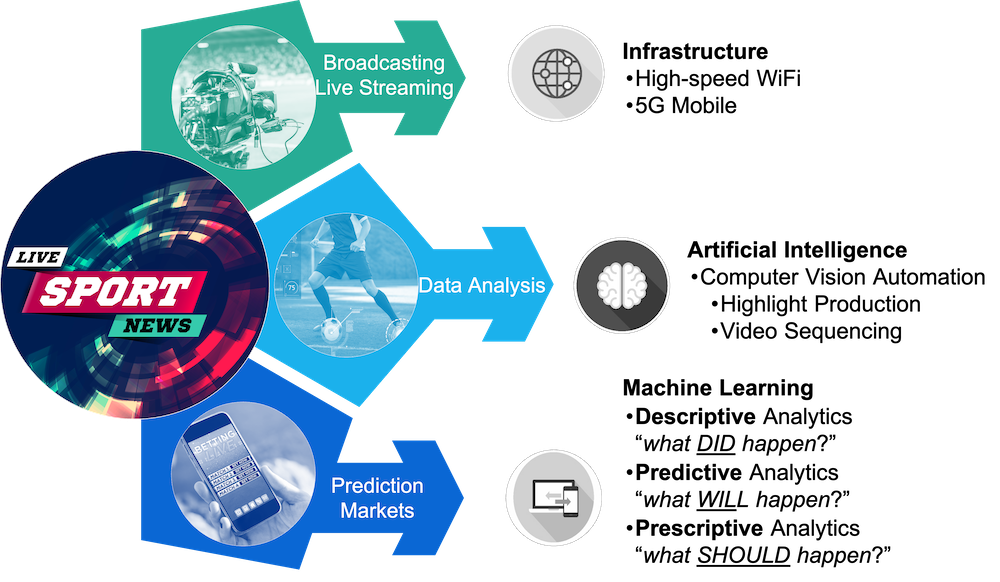Divergence of Media and Data Rights

2021-02 Sports media rights are marketed globally by selling licenses to various channels that broadcast events regionally. Besides the conventional broadcast footage, sports performance data derived from the athletes' wearable devices has become increasingly popular. In the book chapter “The Reach of Sports Technologies” the authors predict that continued adoption of sportstech may prompt a ‘Divergence of Media and Data Rights in Broadcasting’ 1.
Divergence of media and data rights in sport broadcasting
On the one side, examples exist where leagues are making available performance data derived from athletes' wearables to broadcasters in addition to that data being used by a team’s coaches and sports science staff. On the other side, broadcasters are increasingly using technologies that derive performance analysis using only conventional broadcast footage. The governing sporting body of football, FIFA, is recognizing the importance of technology in sport. For example, FIFA recently announced to assess performance tracking systems that are based on traditional broadcast feed (see FIFA announcement) in addition to it existing Electronic Performance and Tracking System for wearables (EPTS).
Accordingly, cutting-edge technology advances sport presentation and enables content distribution in three ways:
1. Broadcasting and live streaming rely on high-speed data infrastructure for transmission to the fan;
2. Data analysis derived from broadcast footage is driven by advancements in computer vision; and,
3. Prediction markets depend on analytics based on machine learning algorithms.
Additional information
If you are interested to learn more about how technologies are changing sports in the digital age, download “The Reach of Sports Technologies” from the Springer website or contact chemneera for a discussion about specific examples of technology adoption.
1 Schlegel M.U., Hill C. (2020) The Reach of Sports Technologies. In: Schmidt S.L. (eds) 21st Century Sports. Future of Business and Finance. Springer, Cham. https://doi.org/10.1007/978-3-030-50801-2_6



